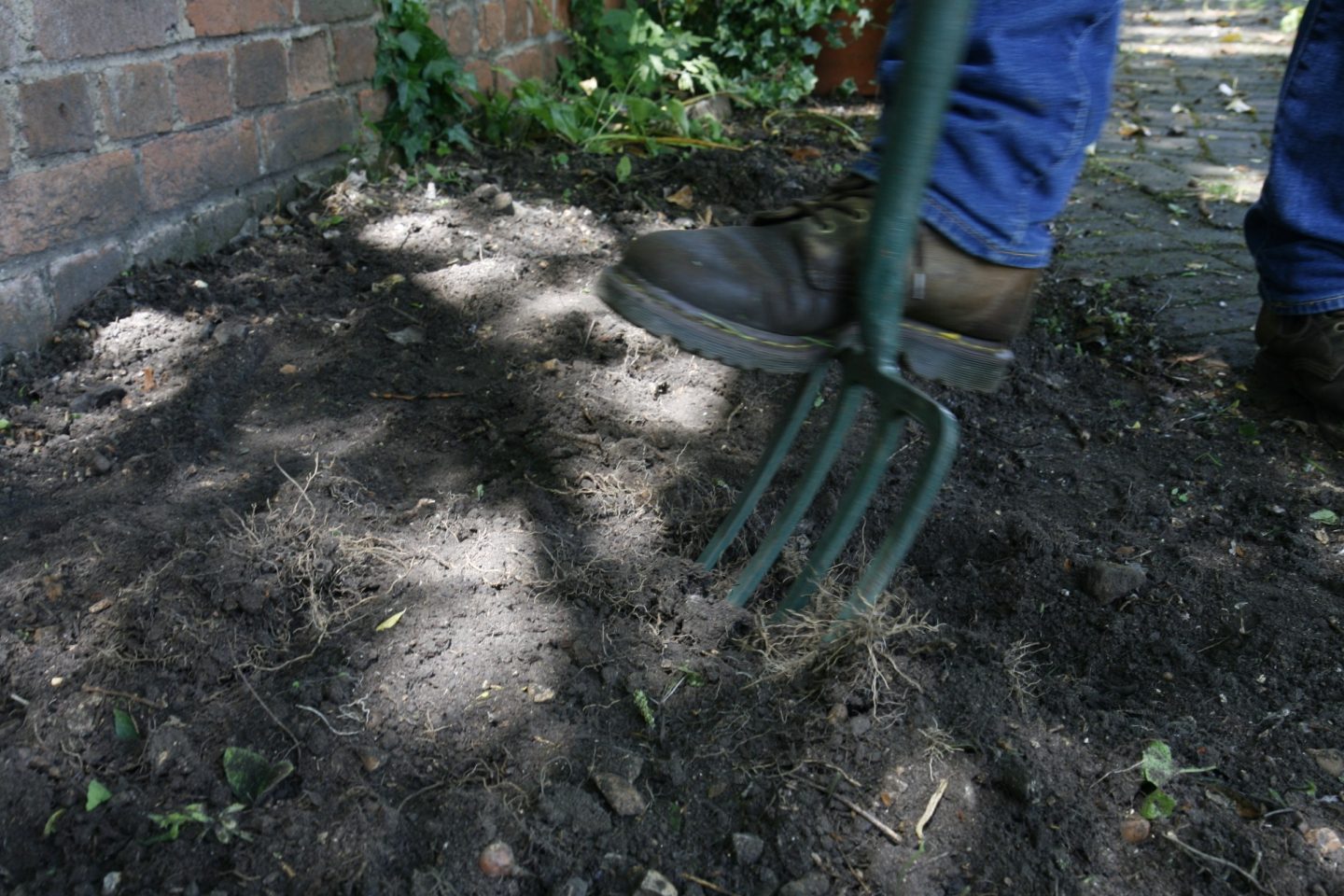Helpful information
Timing: Spring, summer, autumn
Where to do it: Outdoors
Garden space: Large garden, small garden, balcony

Timing: Spring, summer, autumn
Where to do it: Outdoors
Garden space: Large garden, small garden, balcony
Essential items
Optional items

Spade
A long-length spade is useful for bigger digging jobs where you want to limit bending, such as:
You can get digging and border spades. These are similar looking, but border spades are typically lighter with a slightly smaller head. Some people may find these easier to use.
Search for spades online
If you are digging in raised beds, some people find a perennial spade helpful. This is a mid-length handle spade.
Search for perennial spades online
Garden fork
A full-length garden fork is helpful to turn over the soil with minimal bending. It requires less strain than a spade for this task.
This is useful when preparing beds and borders for planting.
Search for garden forks online
Hand tools
There are plenty of times when hand tools are useful for digging. You can use hand trowels and hand forks to:
Look for tools with easy-to-hold grips. You can find ergonomic hand tools, either with the handle at a right-angle or with curved handles. You may find these more comfortable.
You can find plastic hand tools. These will be lighter to hold, but may be less effective at digging.
You can also find multi-change handles, if you want the flexibility of a longer or shorter tool.
Cultivating tools
Cultivating tools break up lumps in the soil. They are very helpful when preparing beds and borders for planting. You can generally achieve a finer soil texture than with a spade or garden fork.
There are a variety of cultivating tools available. The most common of these are a garden cultivator, tiller or soil miller. One we like to use at Thrive is the garden claw.
Having the right length and weight spade will help you avoid some of the strains that come from digging. Try and hold any tool before buying.
Digging is a good workout and can be quite therapeutic. It is also quite a tough and repetitive task.
If you want to reduce the need for digging, you could look into the no dig method. There is plenty of information, including FAQs on Charles Dowding’s website. Some principles to keep in mind:

This is some good general advice to make digging safer and more comfortable.
If you have beds and borders, keep them narrow so you don’t have to step on the soil to reach. Around 50cm is a person’s maximum reach.
Consider using raised beds and elevated planters or containers. These bring the soil off the ground and make any digging easier. Read our guides to container gardening and gardening in raised beds.
I live in a flat now, with no garden, but I have an allotment. There’s always lots of clearing and digging to be done, so it’s a good way of keeping fit.
Mark, Thrive client gardener
If you dig in the autumn, you can leave the soil uneven over winter. Any frosty weather will help break up the soil.
Gather all the tools you need before you begin to save repeat trips to the shed.
Digging can put a strain on your back, shoulders and arms. Always 'warm up' with a few gentle stretches before digging.
Work for short periods. Take regular breaks and change activities to something gentler if needed.
"I use abdominal breathing techniques to manage breathlessness and take regular breaks."
- survey respondent, gardening and lung conditions
Reducing bending and strain when digging
If you are digging standing up, keep your back straight. You may want to use a back saving tool grip to reduce strain.
Long-handled tools will reduce bending. People with arthritis or lung conditions may find these more comfortable to use.
Digging with a weak grip or general pain
If you have a weak grip, arm or hand pain, or want to make digging more comfortable, add on handles can help. These keep your arm and hand in a natural position, avoiding your wrist bending and twisting. These can be combined with arm support cuffs.
Digging sitting down or from a wheelchair
If you garden sitting down or in a wheelchair, use a long-handled trowel or cultivating tool to dig at ground level.
Supporting your knees when digging
If you are digging at ground level, use a kneeler seat with handles. This supports your knees, helps you get back up again and can be used to sit on.
Digging with sight loss
If you have any sight loss, you may find a right-angle guide useful. These are homemade guides that you lay on the ground to show the area you are working in.
If you are working close to the ground, level the soil after digging using a hand rake and feel as you go. If you are gardening standing, try a long-handled rake together with a right angle guide.
Digging to plant bulbs or small plants
If you are planting bulbs or small plants in pots, a bulb planter is helpful. This makes it easier to create a hole the correct width and depth.
If a digging job seems like too much, ask for help. There are plenty of other tasks in the garden to enjoy doing instead.
Once your digging is complete, you can plan for the next activity.
If you were creating a new bed or border, you may want to prepare it for planting. Or, if you have finished preparing for planting, you can go ahead and add your plants.
Give yourself plenty of time between activities and appreciate that you've had a good physical workout!